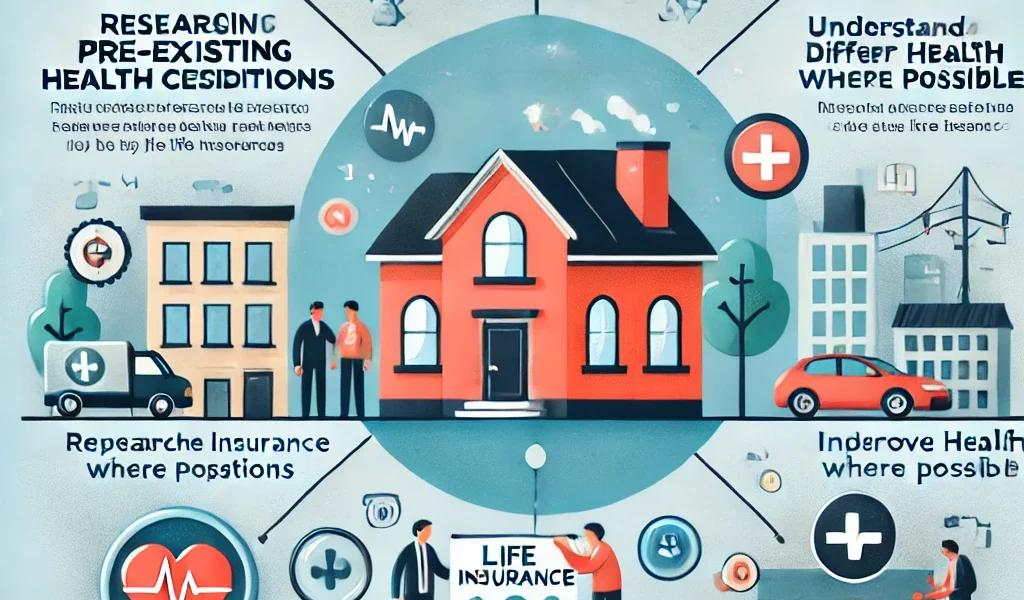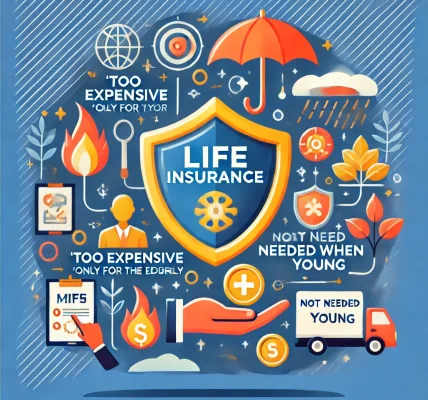Introduction
Having a pre-existing health condition can make buying life insurance seem like an uphill battle. Many people worry that insurers will deny their applications or charge unaffordable premiums. However, the good news is that options are available, and with the right approach, you can secure a policy that fits your needs and budget. This guide will walk you through practical steps, alternative options, and strategies to improve your chances of getting life insurance despite having pre-existing health conditions.
Understanding Pre-Existing Health Conditions in Life Insurance
Pre-existing health conditions refer to medical issues diagnosed before applying for life insurance. These conditions can range from chronic illnesses like diabetes and high blood pressure to more severe ailments such as cancer or heart disease. Life insurance companies evaluate these conditions based on factors such as:
- Severity of the illness
- Treatment and management
- Recent hospitalizations
- Medications taken
- Lifestyle choices
Steps to Buying Life Insurance with Pre-Existing Conditions
1. Know Your Health Condition in Detail
Before applying for life insurance, gather all necessary medical records. Insurance companies will require information about your condition, treatment plan, and prognosis. Having accurate documentation can help you provide precise answers and avoid delays.
2. Work with an Independent Insurance Agent
An independent insurance agent has access to multiple insurance providers and can help find the best policy for your condition. Some insurers are more lenient toward specific health issues, so working with an expert can help you navigate your options.
3. Compare Different Insurance Policies
Not all insurers treat pre-existing conditions the same way. Compare various policies, focusing on:
- Premium costs
- Coverage amounts
- Medical exam requirements
- Policy exclusions
Some companies offer guaranteed issue life insurance, which does not require a medical exam but may have higher premiums and lower coverage.
4. Consider No-Medical Exam or Simplified Issue Policies
If traditional life insurance is difficult to obtain, explore alternative options such as:
- Simplified Issue Life Insurance: Requires only a health questionnaire, no medical exam needed.
- Guaranteed Issue Life Insurance: No health questions or medical exams, but premiums are higher.
- Group Life Insurance: Available through employers and does not typically require medical underwriting.
5. Improve Your Health to Lower Risk
Making lifestyle changes can improve your chances of getting approved at a better rate. Consider:
- Managing your condition effectively with medication and treatment
- Maintaining a healthy weight
- Quitting smoking or alcohol consumption
- Exercising regularly
6. Be Honest on Your Application
Never hide or misrepresent your health condition when applying for life insurance. Insurance companies have access to medical records, and any discrepancies can lead to policy denial or cancellation.
7. Look for High-Risk Insurance Providers
Certain insurers specialize in covering high-risk individuals. Research companies with a history of approving applicants with similar conditions to yours.
8. Consider a Waiting Period Policy
Some life insurance policies have a waiting period of 2-3 years before full benefits are available. If you pass away during this period, the insurer may return your premiums with interest rather than pay the full death benefit.
Alternative Options if Denied Traditional Life Insurance
Employer-Provided Life Insurance
If you have access to life insurance through your employer, take advantage of it. Many group policies offer coverage without medical underwriting.
Accidental Death & Dismemberment (AD&D) Insurance
While AD&D insurance does not cover death from illness, it can provide financial protection in case of accidental death or serious injury.
Final Expense Insurance
This type of insurance is designed to cover funeral and burial expenses and is easier to qualify for than traditional life insurance.
Self-Insurance and Savings Plan
If life insurance proves too expensive, consider setting up a dedicated savings account or trust to provide financial support for your loved ones.
Frequently Asked Questions
1. Can I still get life insurance if I have diabetes or high blood pressure?
Yes, many insurance providers offer coverage for individuals with manageable chronic conditions. The key is demonstrating good health management through medications, diet, and lifestyle.
2. Will my premiums be higher because of my health condition?
Most likely, yes. Insurers determine premiums based on risk, and a pre-existing condition increases that risk. However, comparing multiple insurers can help you find competitive rates.
3. Should I wait until my health improves before applying?
Not necessarily. While improving your health can lead to better rates, it’s best to secure coverage as soon as possible since unexpected health changes could make insurance even more difficult to obtain later.
4. Can I switch life insurance policies if my health improves?
Yes! If you qualify for a better rate in the future, you can apply for a new policy and cancel the old one. Just ensure the new policy is active before canceling your current coverage.
Conclusion
Buying life insurance with a pre-existing health condition may seem challenging, but it’s not impossible. By researching your options, improving your health, and working with experienced professionals, you can secure the right coverage for your needs. Whether you choose traditional policies, no-exam options, or employer-provided insurance, taking action today ensures financial protection for your loved ones in the future.




